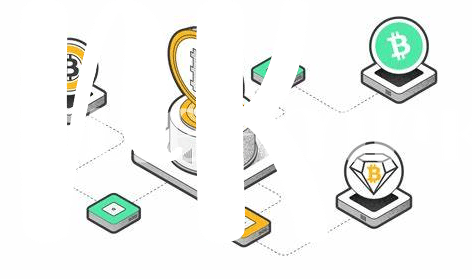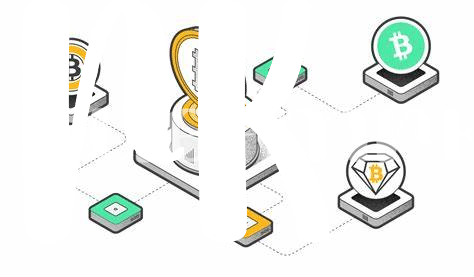🍴 What Are Bitcoin Forks and Why Do They Happen?

Imagine Bitcoin as a main road in a bustling city. Now, imagine at some point, people decide they want a slightly different road, maybe one with more lanes or one that’s more eco-friendly. This is a bit like a Bitcoin “fork” – a moment when that main road splits into two because some users and developers decide they want to try a different route with the cryptocurrency. These forks can happen for a variety of reasons, from disagreements on how Bitcoin should evolve to introducing new features that can’t be supported on the existing path.
| Reasons for Forks | Types of Forks |
|---|---|
| Disagreements among developers | Hard Fork |
| Introducing new features | Soft Fork |
| Improving security | Hard Fork |
| Enhancing transaction speed | Soft Fork |
When these forks happen, it’s like suddenly having two different types of currency from the original Bitcoin, each taking a slightly different path. Some users might follow one path, believing it to be the future of Bitcoin, while others stay on the original path or even try to travel both. This moment of change is significant because it not only shows how flexible and innovative the cryptocurrency world can be but also illustrates the strong sense of community and democracy at play, where users have a say in Bitcoin’s direction.
💹 Understanding the Immediate Impact on Bitcoin Value
When a Bitcoin fork happens, it’s like the digital currency world holds its breath. Imagine a train track suddenly splitting into two: one path is the original Bitcoin continuing on its journey, and the other is a brand-new version, taking a slightly different route. This moment of division often leads to immediate ripples in Bitcoin’s value. Investors and enthusiasts alike watch closely, trying to predict which way the wind will blow. Will this new path lead to a pot of gold, or is it a detour into unknown territory? This uncertainty can cause the value of Bitcoin to swing, as people rush to make decisions based on the little information they have. It’s a bit like being in a boat on a stormy sea; waves of speculation and market sentiment push prices up and down, sometimes wildly. Amidst this chaos, staying informed and secure is crucial. For those looking to safeguard their digital treasures, checking out https://wikicrypto.news/bitcoin-adoption-a-global-central-banks-roadmap-disclosed can provide some much-needed guidance.
🎢 the Ripple Effect on Cryptocurrency Volatility

When a Bitcoin fork happens, think of it as tossing a rock into a pond. Just as the ripples spread outwards, the effects of these forks can be felt throughout the whole cryptocurrency market, not just Bitcoin. Initially, it might seem like only Bitcoin’s value would be shaken up, but soon enough, other digital currencies feel the waves too. This is because investors and traders start to reassess their holdings and the potential impacts of the fork, leading to a sort of domino effect. As some rush to sell off their Bitcoin, anticipating a drop in value, others might see an opportunity and buy more. This tug-of-war creates waves of volatility across the board, making the prices of various cryptocurrencies more unpredictable than usual.
Moreover, the anticipation of a fork can lead to speculative trading. People try to guess the outcome, whether it’ll be a smooth transition or a bumpy ride, affecting not just Bitcoin but many other cryptocurrencies as well. 🕵️♂️ This speculation can lead to sudden and sharp increases or decreases in value, making the market as volatile as a rollercoaster ride. 🎢 Amidst this chaos, savvy investors keep a keen eye on these patterns, trying to navigate the waves to their advantage. It’s a reminder of how interconnected and sensitive the cryptocurrency market is to changes within its ecosystem. 🌐
🚀 Forks as a Gateway for New Coins and Ideas

When a fork in Bitcoin happens, think of it like a path diverging in the woods, offering a new direction to travel. This isn’t just a change in route; it represents the birth of new cryptocurrencies, each carrying a fresh set of features and potentially solving problems that the original Bitcoin hasn’t addressed. This moment of splitting is thrilling because it’s like opening a door to a room filled with new ideas and possibilities. New coins mean new investment opportunities and the chance for innovators to put their stamp on the world of digital currency.
As these new coins come into play, it’s vital for enthusiasts and investors to stay informed and safeguard their digital assets from potential threats. A great way to start is by exploring preventing bitcoin cybercrime: tips and tools explained. This resource can be particularly helpful, offering insights into protecting your investments. Each fork, while introducing volatility, also ushers in a wave of innovation, pushing the boundaries of what cryptocurrencies can do. The support and enthusiasm from the community play a significant role in determining whether these new ventures soar or plummet.
🧐 How Investors React to Bitcoin Forks
When it comes to Bitcoin forks, investors often find themselves on a rollercoaster of emotions and decisions. Some see them as golden opportunities, rushing to grab a piece of the new coin in hopes it will soar in value. Others are more cautious, wary of the uncertainty and potential instability these forks can introduce to their well-calculated investment plans. It’s a bit like having a surprise ingredient thrown into a recipe; you’re not sure how it’ll taste until you try it. The community watches closely, eyes glued to charts and forums, ready to react at a moment’s notice. Key to their decision-making is the potential for forks to create new value or disrupt the status quo, turning the cryptosphere’s unpredictability into a playground for strategic investment moves.
| Investor Reaction | Strategy |
|---|---|
| Opportunistic | Quickly acquiring new coins post-fork |
| Cautious | Observing market reaction before making moves |
| Strategic | Leveraging forks for potential portfolio diversification |
👫 the Role of Community Support in Forks’ Success

Imagine you’re part of a big family deciding on the rules of a game you’re inventing together. In the world of Bitcoin, that’s sort of like a fork – when the community decides to update or change how Bitcoin works. But just like in any family, not everyone agrees all the time. Whether these forks are successful or not can greatly depend on how much support they get from the community. Think of it as needing a big group of friends to say “yes” to your version of the game. This backing isn’t just about clapping hands; it’s about using it, sharing it, and sometimes, defending it against misinformation.
The community’s reaction to a fork can be loud and clear. They vote with their actions: either by moving their digital coins in support of the new fork or sticking with the original. This is pivotal because their support can bring attention, trust, and even more users to the fork. It’s like launching a new boat. If enough people help to row, it catches the wave and sails off. But without enough hands, it might just float aimlessly or sink. Amid these dynamics, central banks worldwide are also forming their views on cryptocurrencies. Understanding their stance helps in grasping the broader landscape of digital currency adoption. For a detailed look, here is an overview of the countries where bitcoin is recognized as legal tender explained, shedding light on the shifting sands of regulation and acceptance.
